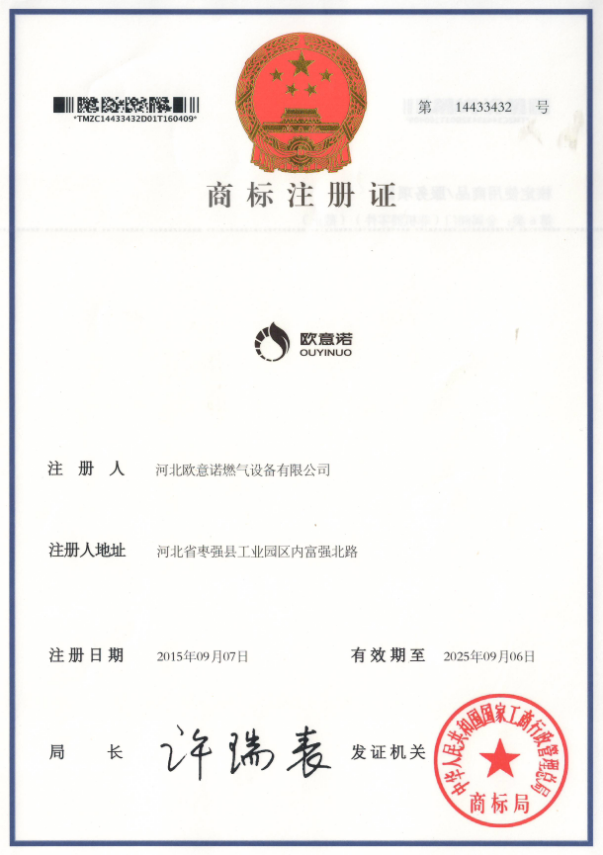
Nov . 07, 2024 18:20
Back to list
Gas Pressure Regulation Valve Optimization Techniques and Best Practices for Efficiency
Understanding the Gas Pressure Regulator
A gas pressure regulator is a critical component in various applications involving gas systems, including residential, commercial, and industrial contexts. Its primary role is to control the pressure of gas delivered from a source, such as a gas tank or a pipeline, ensuring a safe and consistent supply to appliances and equipment. Understanding the function and importance of a gas pressure regulator is essential for both users and technicians working with gas systems.
Principles of Operation
At its core, a gas pressure regulator operates on a simple principle it reduces the high pressure from a gas supply to a lower, more usable pressure. The design of a gas pressure regulator typically involves a diaphragm, a spring, and a valve mechanism. When gas enters the regulator, it acts on the diaphragm, which in turn controls the opening and closing of the valve. This mechanism adjusts the flow of gas, maintaining a steady output pressure regardless of fluctuations in the inlet pressure.
The regulation process can be further understood through the concept of a feedback loop. As demand for gas increases (for example, when a stove is ignited), the pressure drops slightly, causing the diaphragm to move. This action opens the valve further, allowing more gas to flow until the pressure stabilizes at the set level. Conversely, if the demand decreases, the diaphragm closes the valve, reducing the gas flow. This automatic adjustment is what makes gas pressure regulators vital for safety and efficiency.
Importance and Applications
.
Moreover, these regulators play a crucial role in safety. Excessive gas pressure can lead to dangerous leaks, explosions, or damage to appliances. By maintaining proper pressure levels, regulators help prevent potential hazards and ensure compliance with safety standards. Regular maintenance and proper installation are essential to keep these systems functioning correctly and to avoid accidents.
صمام تنظيم ضغط الغاز

Types of Gas Pressure Regulators
There are several types of gas pressure regulators designed for different applications. The most common types include
1. Single-Stage Regulators These are suitable for low-pressure applications, where the difference between the inlet and outlet pressure is minimal. They offer a quick response time but can be less stable under varying flow conditions.
2. Two-Stage Regulators These are used where more precise control is necessary. They first reduce high inlet pressure in the first stage and then adjust to the desired output pressure in the second stage, offering greater stability under fluctuating demand.
3. High-Pressure Regulators Used in industrial applications, high-pressure regulators can handle significant variations in inlet pressure and are designed to maintain a constant outlet pressure regardless of flow changes.
4. Automatic Reset Regulators These types return to their preset pressure after a temporary loss of pressure, maintaining consistent output even during fluctuations.
Conclusion
In conclusion, gas pressure regulators are indispensable components in gas systems, ensuring safety and efficiency across various applications. By controlling the pressure of gas supplied to appliances, they help prevent hazards and enhance performance. Understanding the function, types, and importance of gas pressure regulators can empower users and technicians alike to make informed decisions regarding gas installations and maintenance. Regular checks and adherence to safety protocols are essential in making sure these systems operate effectively and safely, ultimately contributing to a more secure environment for all.
Latest news
-
Safety Valve Spring-Loaded Design Overpressure ProtectionNewsJul.25,2025
-
Precision Voltage Regulator AC5 Accuracy Grade PerformanceNewsJul.25,2025
-
Natural Gas Pressure Regulating Skid Industrial Pipeline ApplicationsNewsJul.25,2025
-
Natural Gas Filter Stainless Steel Mesh Element DesignNewsJul.25,2025
-
Gas Pressure Regulator Valve Direct-Acting Spring-Loaded DesignNewsJul.25,2025
-
Decompression Equipment Multi-Stage Heat Exchange System DesignNewsJul.25,2025

